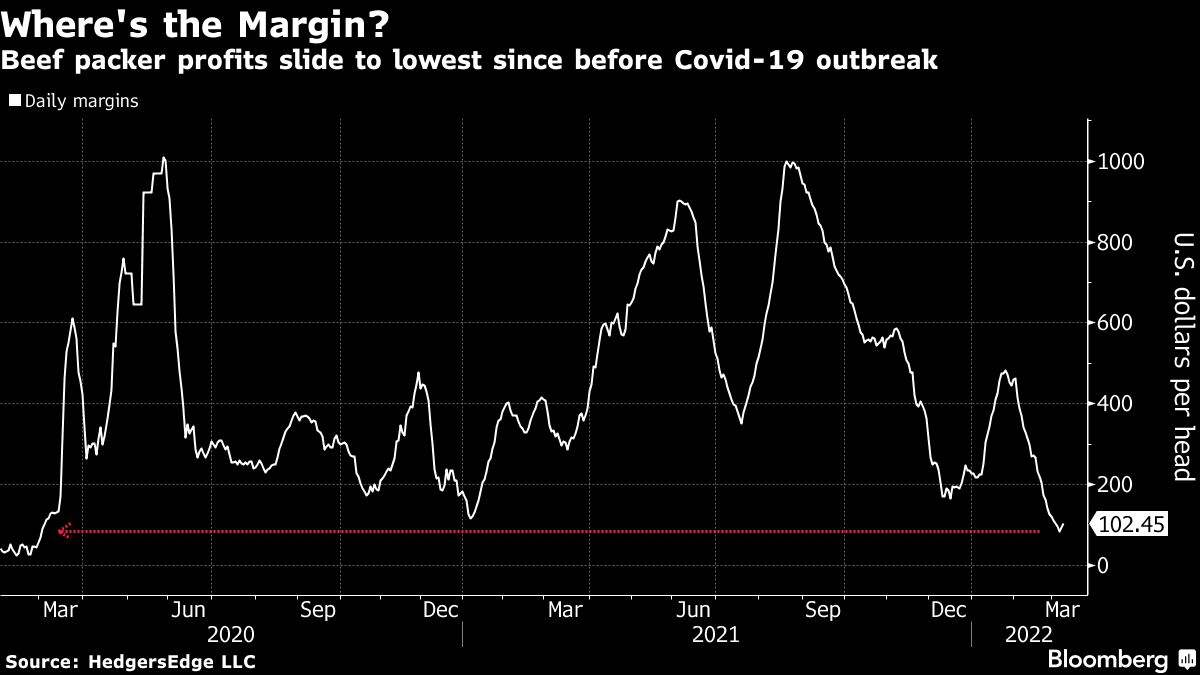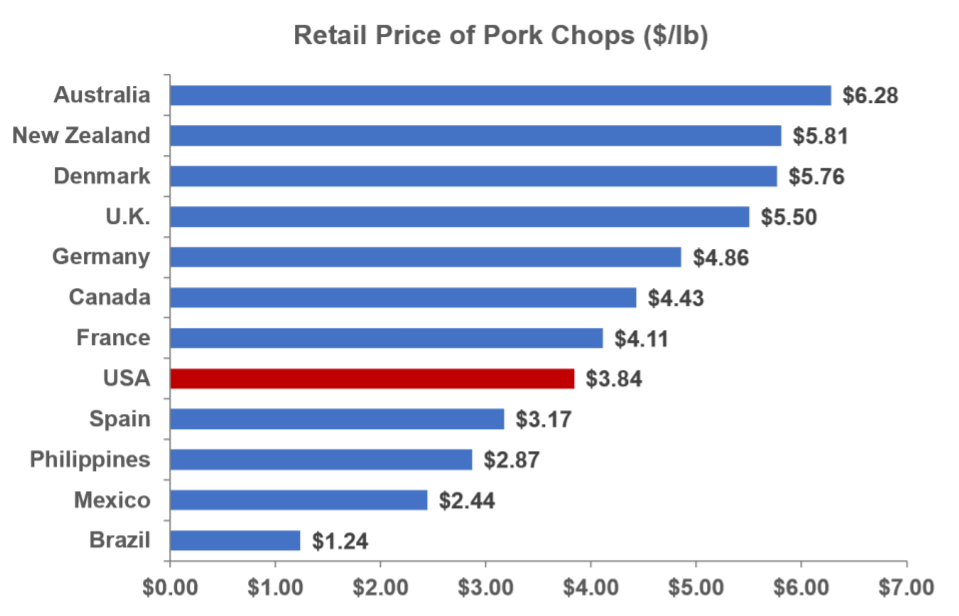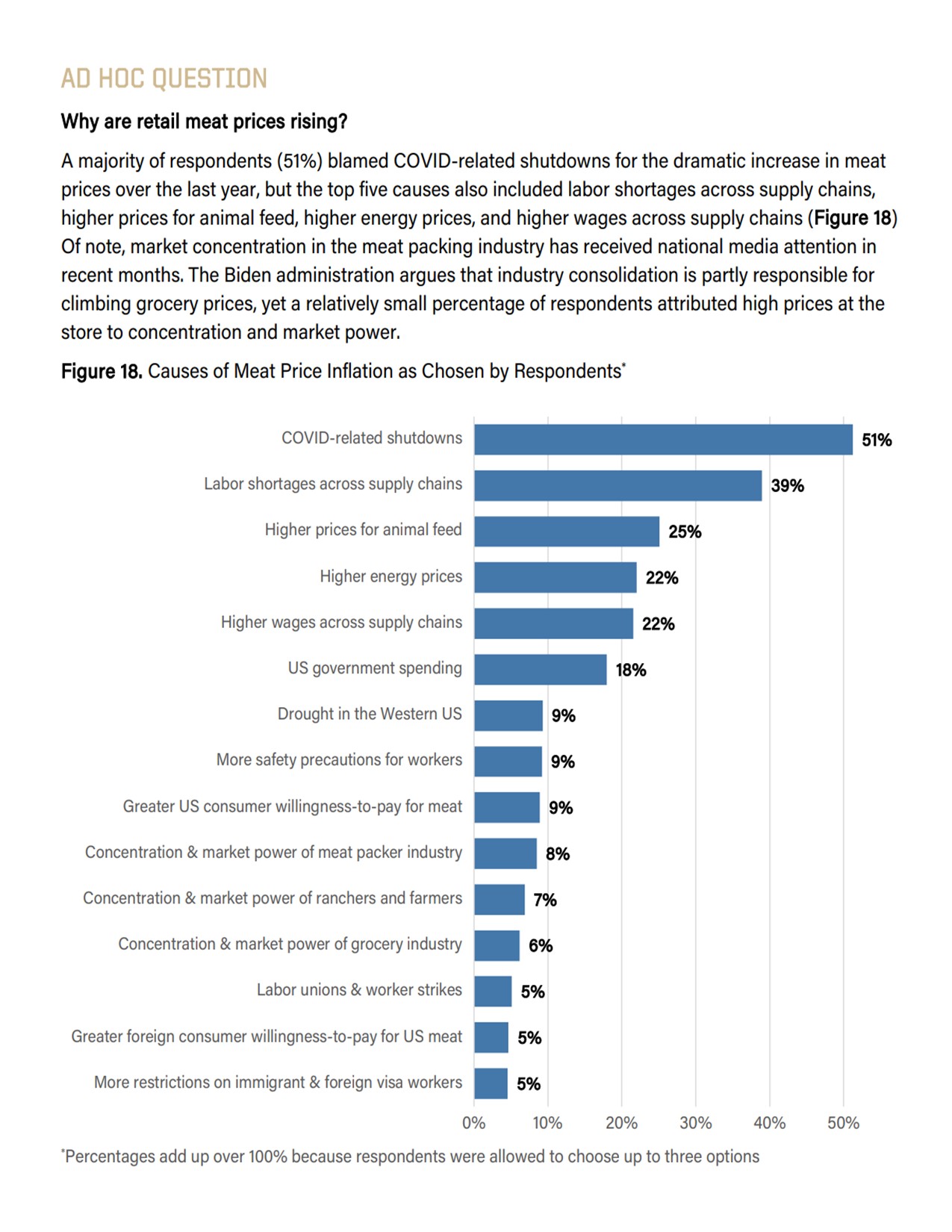What Economists and Analysts
are Saying About Meat Prices
Economists and industry analysts confirm that today's higher meat prices are a direct result of constrained supplies due to the labor shortage, higher input costs for such things as grain, labor and fuel, and stronger consumer demand.
-
“Demand and supply is largely driving inflation,” Treasury Secretary Janet Yellen said at a New York Times hosted event when asked about the view that corporate greed is a key cause. She said that it’s true that price-to-cost margins have gone up, but she said that’s not driving inflation. Source: New York Times - (June 9, 2022)
-
“The public tends to think of inflation as an indicator of cycle of greed and inhumanity, as a conspiracy to rob them of their buying power,” said Robert J. Shiller, a professor at Yale, won the Nobel in economic science in 2013 in the New York Times. “In reality, the cause is more technical, like an increase in the money supply or disruptions in the supply chain.” - (Feb. 8, 2022)
- “Rising demand, with capacity and labor constraints, are fully sufficient to account for what we observe in meatpacking – Administration claims notwithstanding.” - Lawrence H. Summers, former U.S. Treasury Secretary, Twitter (Dec. 26, 2021)
-
“As someone who has researched corporate financial decision making for the last twenty years, I am not aware of any finding in the academic literature that corporations significantly altered their desire to generate profits in the last year relative to the decades that preceded the pandemic." - Michael Faulkender, Dean’s Professor of Finance, University of Maryland and former Assistant Secretary for Economic Policy at US Department of Treasury. Source: recent testimony on April 5 to Senate Budget Committee hearing on corporate profits (April 5, 2022)
-
“The truth is, we don’t need to conjure up complex theories about market concentration to explain our current inflation. The supply‐side of the economy was damaged by COVID-19 and its aftermath. Politicians passed historic stimulus bills and the Federal Reserve accommodated these with expansive policy for too long.” - Ryan Bourne, R. Evan Scharf Chair for Public Understanding of Economics, Cato Institute. Source: website commentary on recent April 6 House committee hearing on labor market (April 12, 2022)
-
“Like so much else in the Biden era, meat prices have soared amid surging demand, rising production costs, and constrained supply…The other reason prices are rising is because costs for meat producers are also rising fast.” - Wall Street Journal Editorial Board Opinion (Jan. 7, 2022)
-
“Inflation, which was relatively low for years, did not suddenly rise in recent months because businesses decided now was the ideal time to squeeze their customers. What actually happened is that demand soared for many products as the economy recovered. Often, there were not enough products to meet it, thanks to supply chain hiccups and labor shortages, so prices went up.” - Washington Post Editorial Board Opinion (Jan. 10, 2022)
-
“Like so many other products, the factors driving meat prices higher include increased demand, COVID-related supply chain disruptions, and increased input costs, especially higher energy and labor costs.” - U.S. Chamber of Commerce News Release (Jan. 3, 2022)
-
“Antitrust will not solve the problem of inflation; and high prices crushing American workers and consumers stand as a stark reminder why reforms that raise prices in the service of other goals are the wrong direction for antitrust policy.” - United States of America Federal Trade Commission, Inflated Claims: Hot Air about Rising Prices, Corporate Greed, and Antitrust (Jan. 2022)
-
“There are three broad reasons for the run-up in food prices…There was a dramatic increase in money supply brought about by the expansion of unemployment benefits and stimulus-type spending in response to the pandemic…Extra money in consumers’ pockets points to a second driving factor behind food price inflation: increased demand… Finally, there are supply-side factors…Grain and oilseed prices have been higher in 2021, and this has pushed up the cost of feed for livestock and poultry. Challenges finding sufficient labor in the food and agricultural sector have led to rising wage rates. Additional challenges associated with transportation and supply chain logistics have added further costs to the system." - Jayson Lusk, distinguished professor and department head of Agricultural Economics, Perdue University, The Year of Food Price Inflation (Jan. 13, 2022)
-
“Consumers are buying beef. Our exports are booming…What we're seeing with prices, I would argue as an economist, that's exactly what we should see given this bottleneck. And capacity problems aren't going to be fixed overnight." - David Anderson, livestock economist, Texas A&M University, Reuters (Jan 19, 2022)
-
“I don’t think corporate consolidation explains the jump in prices. I don’t see a good story here in blaming inflation on concentration.” – Dean Baker, Senior Economist at the progressive learning Center for Economic and Policy Research, Washington Post (Jan. 10, 2022)
-
“As for the meatpackers, the White House complains that just four companies dominate the market. But four companies have had an outsize market share over the past 25 years, and the price of beef has bumped around, roughly in keeping with overall prices, during that entire period. What’s happened during the pandemic is that there has been high demand that, combined with labor disruptions at meatpacking plants, has disrupted supply. Increased demand and limited supply, of course, equals rising prices.” - Rich Lowry, National Review Editor and Politico Contributing Editor (Dec. 16, 2021)
-
“Estimated profit margins for beef packers fell to $102.45 per head Tuesday. That’s the around the lowest since before the coronavirus pandemic began early in 2020. During the outbreak, workers inside slaughterhouses caught the virus and forced plants to close, limiting the amount of beef available and sending prices soaring to record highs. Packer margins peaked at $1,009.30 per head in May 2020,” - Bloomberg (Mar. 9, 2022)

-
“This report shows the concentration level in the pork-packing industry is not significantly higher than it was 15 years ago,” said Jen Sorenson, president of NPPC. “The recent increase in pork prices is driven by strong pork demand, rising input prices, higher wages and supply chain bottlenecks throughout the industry.”
-
Although pork prices have risen rapidly in recent months,” said economist Dermot Hayes of Iowa State University, “retail and carcass prices in the US are still relatively low when compared with prices in other countries.” - National Pork Producers Council Report, Current economic factors have led to higher pork prices, not industry concentration (Jan. 2022)

- A majority of consumers blame pandemic-related disruptions for the sharp rise in meat prices that has taken place over the past two years, according to a new Purdue University survey. The monthly Consumer Food Insights Report said 51% of survey respondents blamed shutdowns for the higher meat prices while only 8% cited concentration in the meatpacking industry, an issue the Biden administration has spotlighted. Some 39% attributed the price increases to labor shortages, a key factor cited by processors. About 1,200 consumers responded to the online survey conducted Jan. 18-20 by the market research firm Dynata. Survey: Consumers blame shutdowns, not packers, for higher meat prices – Agri-Pulse (Feb. 2022)
